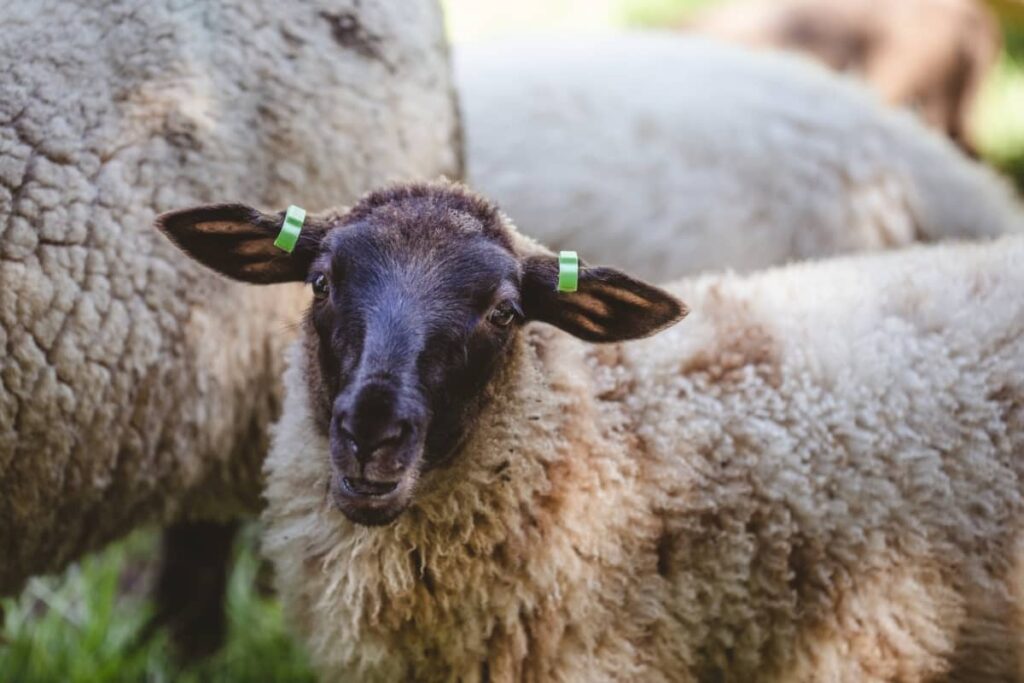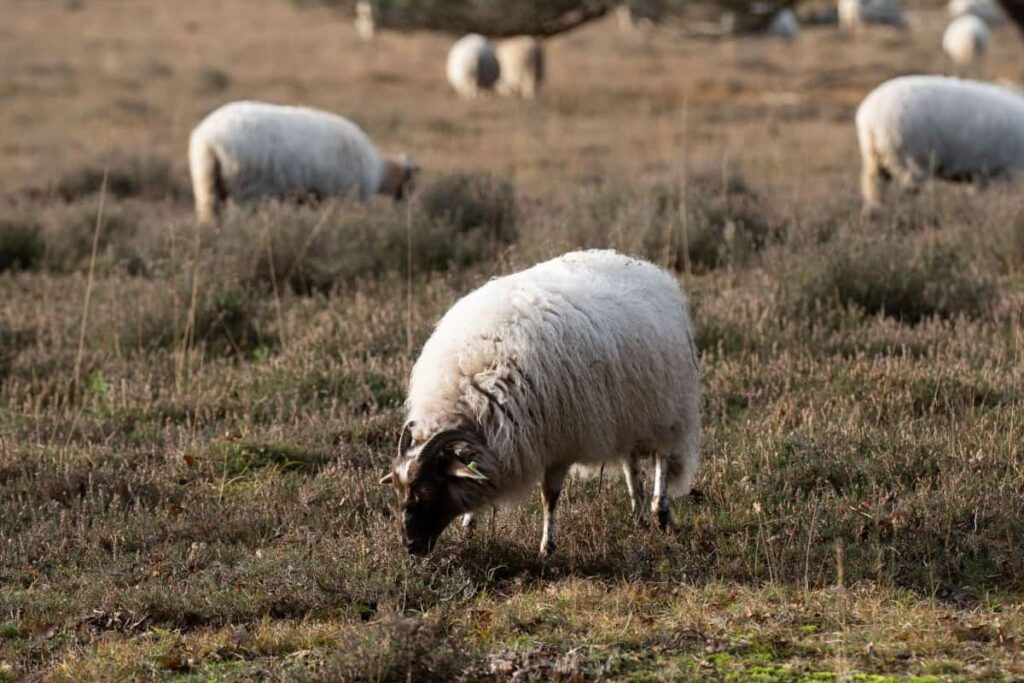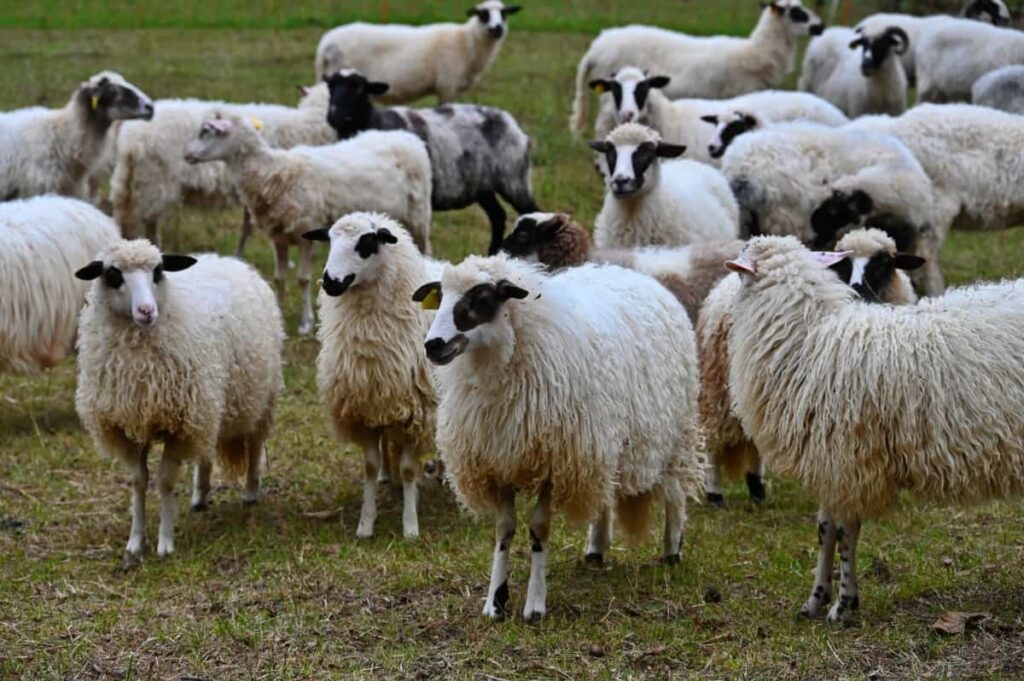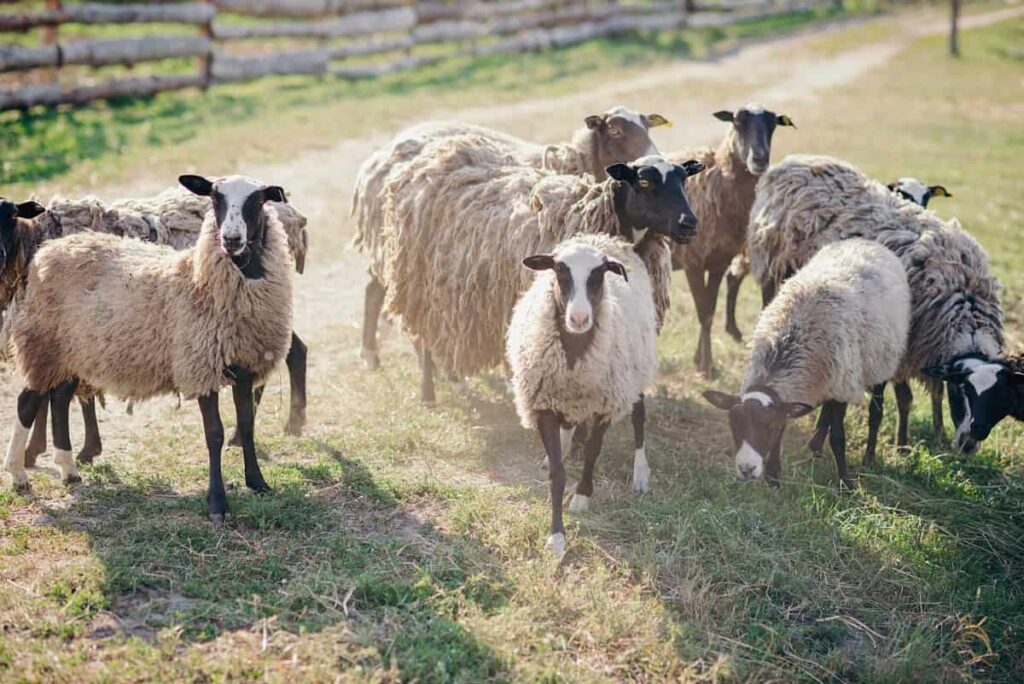The Shetland is a small, wool-producing breed of sheep originating in the Shetland Isles, Scotland, and also kept in many other parts of the world. It is believed that the ancestors of Shetland Sheep were brought to the islands by Norse settlers over 1,000 years ago. The price of Shetland Sheep can vary depending on various factors such as age, breed quality, health status, and location. On average, the cost is around $200 to $500 per sheep.

Shetland Sheep Breed
Unique Features of the Breed
Shetland sheep are truly remarkable creatures, boasting several features that set them apart from other breeds. The main feature is their small stature, making them perfectly suited for smaller farms and homesteads. Despite their size, these sheep possess incredible hardiness and adaptability.
Another distinctive characteristic of Shetland sheep is the wide variety of coat colors and textures. From solid whites to rich browns and even striking patterns, their fleece comes in an array of hues that can be admired by wool enthusiasts worldwide. The texture of their wool ranges from fine to medium, ensuring versatility for various crafting projects.
Physical Characteristics
Description of Size and Build
These compact and sturdy animals have a well-proportioned body with strong legs that allow them to navigate rugged terrains with ease. Their build is well-proportioned, with a deep chest and a strong bone structure. Their legs are short and strong, allowing them to navigate rocky terrains with ease.
When it comes to the physical characteristics of Shetland sheep, their size and build are quite distinctive. Rams typically weigh between 90-125 lbs, while ewes generally range from 75-100 lbs. Despite their small stature compared to other sheep breeds, Shetlands are known for their remarkable resilience and adaptability.
Variety in Coat Colors and Textures
Shetlands come in various colors, including white, black, gray, brown, and even spotted patterns. This diverse color adds to the visual appeal of these adorable creatures. And let’s not forget about their luxurious wool coats. Shetlands boast a dense fleece that provides excellent insulation against chilly temperatures.
Breed Varieties and Genetics
Overview of Shetland Sheep Varieties
One popular variety is the Moorit Shetland sheep, which have rich chocolate brown wool that can vary from light to dark shades. Another variety is the Katmoget Shetland sheep with their distinct markings on the face and legs. In addition to these variations, Shetland sheep also come in different sizes. The genetics behind these variations are equally intriguing.
Genetic Traits and Diversity
Shetland sheep are known for their remarkable genetic traits and diversity, making them a fascinating breed to study. These hardy creatures possess a wide range of characteristics that have been carefully developed over centuries. The main aspect is Shetland’s ability to adapt to different environments. Furthermore, Shetlands exhibit significant genetic diversity thanks to careful breeding practices.
Habitat and Environmental Adaptation
Native Environment: The Shetland Islands
The rugged terrain, unpredictable weather patterns, and limited resources have shaped the breed’s ability to adapt and thrive in various environments. Shetland sheep are well-suited to their native environment due to their hardy nature. These adaptable creatures make use of every available resource on the islands. Due to their resilience and adaptability, Shetland sheep can also be raised successfully in other climates around the world.
Adaptation to Other Climates
Whether it’s the freezing temperatures of northern regions or the scorching heat of more temperate climates, Shetland sheep can adapt and flourish. In colder climates, where snowfall is common, Shetland sheep use their nimble hooves to navigate through deep drifts and graze on available forage under frozen surfaces. On the other hand, when faced with hotter environments, these resourceful creatures rely on natural shade provided by trees or other structures.
In case you missed it: How to Make Silage for Livestock: Business Plan, Preparation Process for Goats, Sheep, Pigs, and Cows

Diet and Nutrition
Natural Foraging Habits
Diet and nutrition are crucial aspects of raising healthy Shetland sheep. These hardy creatures have a foraging instinct, which makes their diet unique and varied. As grazers by nature, Shetland sheep require ample access to fresh pasture throughout the year. A rotational grazing system can be beneficial in maintaining optimal pasture health while providing a steady source of food for the flock.
Nutritional Needs and Management
These hardy animals have unique dietary requirements that must be met to ensure optimal productivity. Shetland sheep are known for their excellent foraging abilities, as they are naturally adapted to thrive on diverse vegetation. Shetland sheep require adequate amounts of protein, carbohydrates, minerals, and vitamins to support their development. Fresh, clean water should always be readily available at all times.
Wool Production and Uses
Quality and Characteristics of Shetland Wool
Shetland sheep are renowned for their high-quality wool, which artisans and crafters around the world prize. The outstanding characteristic of Shetland wool is its fine fiber diameter, ranging from 20 to 30 microns. Another unique quality of Shetland wool is its incredible variety of colors.
Commercial and Artisanal Uses of Shetland Wool
In the commercial realm, Shetland wool is utilized in the production of textiles and clothing items such as sweaters, scarves, blankets, and socks. Its natural insulation makes it ideal for winter wear, providing comfort and snugness in cold weather. Artisans value Shetland wool for its ability to hold intricate designs while maintaining a lightweight feel. Additionally, the elasticity of Shetland wool makes it an excellent choice for felting projects.
Reproductive Health and Breeding
Breeding Season and Practices
The breeding season of Shetland typically occurs in the fall, with most farmers opting to introduce rams to their ewes during this time. During the breeding season, it’s important to ensure that your ewes are healthy and in good condition. When introducing the ram to the ewes, careful observation is necessary to ensure successful mating takes place.
This can involve closely monitoring the behavior of both rams and ewes, looking out for signs of interest or readiness. Once successfully mated, it’s important to keep track of each ewe’s pregnancy progress. Regular health check-ups can help identify any issues early on and allow for appropriate intervention if needed.
Lambing: Care and Management
It’s important to provide a clean and comfortable environment for the ewe during labor. A quiet and stress-free space will help her feel at ease. Keep an eye out for any signs of distress or complications, as immediate intervention may be necessary. After birth, ensure that both mother and lambs receive appropriate care. Regular check-ups are also paramount during this period.
In case you missed it: The Ultimate Guide to Sheep Vaccination Schedule: Deworming Chart/Calendar

Health and Welfare
Common Health Issues and Prevention
The main issue is parasitic infections. These sheep are susceptible to internal parasites like worms, which can cause weight loss, diarrhea, and anemia if left untreated. Regular deworming is essential in preventing these infestations.
Another issue for Shetland sheep owners is foot problems. Respiratory infections are also a potential problem for Shetland sheep, especially during colder months or when they are housed in damp environments. To ensure the overall well-being of your flock, it’s important to provide them with a balanced diet that meets their nutritional needs.
Best Practices for Welfare and Management
Provide a suitable shelter that protects the sheep from harsh weather conditions, such as strong winds and extreme temperatures. Maintain a regular feeding schedule with high-quality hay or pasture supplemented with minerals and fresh water at all times. Develop an effective parasite control program that includes deworming protocols tailored to your specific geographical area and flock size.
Economic Importance and Market
Role in Local and Global Markets
Locally, Shetland sheep contribute to the economy by providing a source of income for farmers. Their wool is sought after for its exceptional quality, making it a valuable commodity. In terms of global markets, Shetland wool has gained recognition for its unique characteristics. Furthermore, the popularity of sustainable and ethically produced materials has led to an increased interest in Shetland sheep’s wool worldwide.
Economic Viability for Small Farms
Small farms are the backbone of our agricultural industry, and raising Shetland sheep can offer a viable economic opportunity. These hardy and versatile animals can thrive in various climates, making them suitable for small-scale farming operations.
The advantage of raising Shetland sheep is their ability to adapt to different environments. The demand for Shetland wool has been growing steadily in recent years, opening up new avenues for income generation. By marketing Shetland lamb meat directly to local markets or participating in farmer’s markets, small farmers can establish themselves as providers of high-quality, sustainable food options.
In case you missed it: Karnataka Sheep Farming: A Comprehensive Guide to Loans and Subsidy

Conclusion
Shetland Sheep were prized for their ability to thrive in harsh conditions, as they had to endure strong winds, cold temperatures, and limited food sources on the islands. Over time, this selective breeding resulted in a unique breed with exceptional adaptability. The Shetland Sheep breed is known for its high-quality wool production.
Note: The images presented in this post are intended solely for representation purposes. The images are meant to serve as visual aids and should not be relied upon as accurate representations of their real-life counterparts.
- Aquaponic Farming at Home: A Step-By-Step Guide
- Profitable Village Farming Business Ideas in 2024
- High-Yield Aquaculture: Fast-Growing Fish for Farming
- Effective Fish Pond Construction Techniques for Beginners
- Irrigation and Water Management in Pineapple Farming
- Blossom to Harvest: Mastering Flowering and Pollination in Papaya Farming
- Pig Fattening Essentials: From Selection to Sale for Beginners
- Raising Wagyu Cattle: A Complete Guide for Premium Beef Production
- Soil Types and Their Water Holding Capacity
